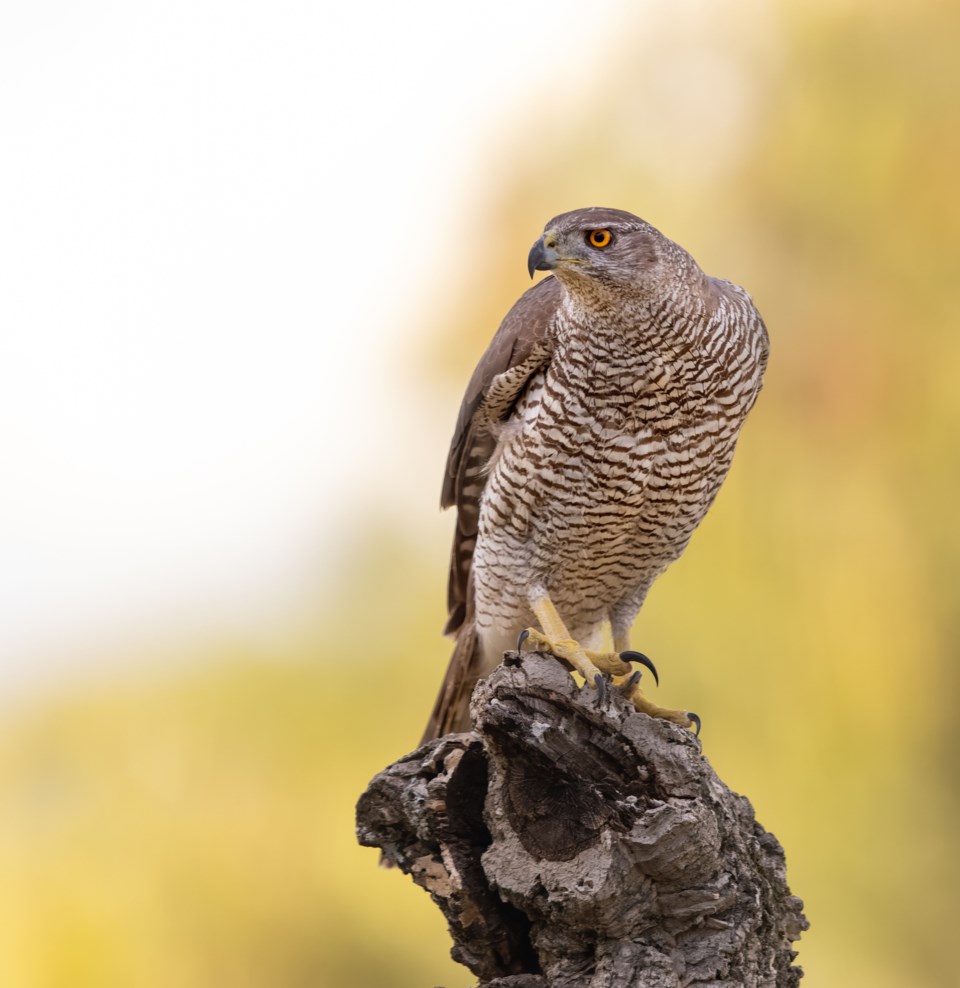On his way from photographing a juvenile northern goshawk earlier this year, local ecologist Bob Brett happened to run into a forester and mentioned the rare sighting of the protected, red-listed species. His response? “Well, that’s bad for forestry.”
But to Brett, a vocal environmental advocate and co-founder of the Whistler Naturalists, it was anything but negative.
“It’s a good news story if we have northern goshawks and those other animals that require specialized habitat,” Brett said. “It’s a sign that we’re doing things well. I would love to have a situation where foresters get excited and happy when we find goshawks, rather than see it as an impediment to logging.”
According to the Resort Municipality of Whistler (RMOW), there are seven known goshawk nests in the Whistler Valley—and likely more, according to Brett.
“I’d be surprised if there were less than two active nests each year in Whistler,” he posited. “Just because we don’t find the nest doesn’t mean they’re not around. There was an active nest in Whistler last year in the Callaghan and the proof of an active nest this year from seeing a juvenile. A juvenile is about the best sighting you can get, because it proves not only there was an active nest, but that it was successful.”
Like other birds, both subspecies of northern goshawk, their occupied nests, and eggs are legally protected from harm under B.C.’s Wildlife Act. The coastal northern goshawk, the same subspecies spotted in Whistler, and its nests are also protected federally under Canada’s Species at Risk Act.
Preferring interior old-growth forest for breeding and nesting, it’s not unusual for the northern goshawk to reuse old nesting sites long after they were last active. Despite this, there are no provincial measures to safeguard goshawk nests after the birds fledge.
“The funny thing about the province is they protect osprey and woodpecker habitats after they breed and nest in trees, but for some reason they don’t protect goshawk nests,” Brett explained. “Once they fledge, there’s no protection for that tree, which is odd because goshawks will reuse those nests.”
The impact from the lack of formal protections was clear this summer when Brett said recent logging in the Cheakamus Community Forest (CCF) came as close as 30 metres to a goshawk nesting site.
“They didn’t cut the tree down, but it still takes the nest out of commission because it’s so close to the edge of the forest. Goshawks nest in interior forest conditions, so farther from the edge of the forest. A red-tailed hawk, in contrast, will nest right on the edge of a forest,” said Brett.
At the height of the Fairy Creek protests against old-growth logging in 2021, and with a dearth of commercially harvestable old growth available, the CCF board decided to hit pause on old-growth logging for the remainder of that year, a measure that has stayed in place as the community forest’s partners develop a long-term approach.
While he acknowledged, given the makeup of the CCF, that both goshawks and foresters are “looking for exactly the same habitat”—that is, low-elevation old growth—Brett feels hope around the seeming paradigm shift that has taken place both on the CCF board and in forest management more broadly.
“I am actually optimistic that the partners in the CCF are starting to see other options and I’m optimistic there will be real change in forest management, not only in stopping the logging of old growth, but also in second-growth [management] that leaves room for habitat and doesn’t repeat the error of clear-cutting in the past.”




